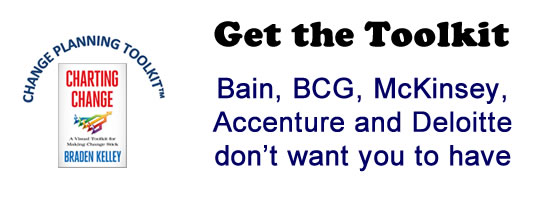The Moonshot to Create the Next Google

Nothing is older than the argument that large companies can’t capitalize on their innovations. Will this be the company that disproves that?
Moonshots are always one part flight-of-fancy, one part brilliance, and 98 parts risk.
“Eventually you’ll fail to fail.” – X Captain of Moonshots, Astro Teller
I grew up in an era of moonshots. Few things in history have been more audacious than sending humans to the moon. The feeling at the time was that it we could that we could do anything. Unfortunately, the euphoria was short-lived. One moonshot did not change the world, there were many, even harder challenges that lay ahead.
So, when Alphabet’s subsidiary X (the same company that owns Google) describes itself as a place dedicated to “moonshots” you can be sure that it will grab my attention.
Google X was established in 2011 as a way to make sure that Google would be able to spawn the next Google, maybe even overtake it. In 2015, along with the restructuring of Alphabet as Google’s parent company, X was spun off as its own entity under Alphabet. Three years later its still not clear if the innovations coming out of X will be able to outdo, or even come close to Google. But they are certainly getting more then a bit of attention.
What Google’s parent, Alphabet, is attempting with projects such as Loon and Wing (see video) is risky and some would say a flight of fancy. One of the perennial and most hotly debated topics in business is whether large companies can innovate at scale, or for that matter, if they should.
History hasn’t been kind to many of Google’s predecessors, such as Xerox, who have tried to capitalize on their inventions. But X is taking a radically different approach which may just become the role model for how innovation can be sustained in a large, bureaucratic, self-serving, corporate structure.
However, it’s certainly not the first time a company has tried to build an in-house innovation capability to fuel its growth.
A Bright Idea
Just 12 years after its formation in 1982, and born of Edison’s light bulb, GE put in place its first R&D center in Schenectady, New York, spearheaded by another great inventor, Charles P. Steinmetz. Over the next two decades GE built its research lab into a powerhouse of talented scientists and engineers. It was a centralized and highly coordinated function within GE, and it was also the role model for virtually every other major organization of the day. Companies from around the globe sent their brightest talent to GE to find out how a lab should be set up and run.
The result was a century of nearly identical research labs fashioned after the classic Edison model. The model worked well. It built much of the 20th Century, from transportation to telecommunication, the transistor to the PC. In some ways it still works. You’d be hard pressed to find a tech company without an R&D function. But it also pigeonholed the idea of innovation as something that resided strictly within the R&D function of an organization.
What’s wrong with that? Well, if high-powered R&D is the source of new ideas, then Google, Facebook, Amazon, Netflix, Apple, Tesla, Uber, and myriad other disruptive companies all should have been invented by incumbents. None were! Yes, they all stood on the shoulders of vast research efforts before them. For instance, in the case of search, there were no less than 30 text retrieval vendors in the 1990s. Some of the leading ones, such as Basis and Verity came directly out of Battle labs and well funded research from the Intelligence community. But Google was not one of the 30.
So, why aren’t the incumbents typically the ones who capitalize on great ideas? It’s not that R&D is dead. Far from it. We still need smart people in medicine, engineering, and science to help solve many of the complex problems facing the world. But R&D will always focus on what’s best for the company which it’s part of.
The challenge is not to move away from R&D but rather to expand the notion of what R&D is and what it applies to, and, in the process, to create a new role model for research that pursues outlier ideas that can come from anywhere in the global braintrust that we are finally able to tap into, en masse, courtesy of the Internet.
Eagles Soar. Ostriches Kick (really hard)
Still, I’ve often wondered if the role of large companies isn’t to innovate but simply to scale innovation while entrepreneurs and small companies, without a legacy to protect, are left to the task of coming up with the disruptive innovation.
Perhaps that’s just the natural order of things. After all, the world’s largest bird can’t fly. Although it’s better known for the iconic caricature of burying its head in the sand (which it doesn’t do) the Ostrich is actually a pretty ferocious beast. It can run at a top speed of over 40 MPH and its kick is powerful enough to kill a lion. In short, while it isn’t pretty and it lacks the agility and grace of an eagle, you sure don’t want to mess with it.
Ironically, evolutionary scientists believe that the Ostrich evolved its ground-based abilities as the result of the dinosaurs’ mass extinction. Without land-based predators these large birds no longer needed to take to the skies, where, given their size, flight would require the expenditure of enormous amounts of energy. Nature is pretty efficient when it comes to conserving energy; why soar with eagles when you can hang with hyenas?
It’s not much different for large companies, which seem to loose the ability to innovate once the threats to their existence are removed by virtue of their size and the resources they have to stomp out small competitors.
We saw it in the US automotive industry, which nearly imploded because of its inability to move towards a future that pretty much everyone could tell was not going to be dominated by gas-powered vehicles.
We’ve seen it with Kodak, which invented digital photography and yet was bankrupted by it.
These were not cases of stupid people running laggard companies. They were very smart people placing bets on what was predictable and certain over what was disruptive and uncertain. Increasing uncertainty for a large company is like lowering oxygen levels for a pilot. Before they even know what’s going on they’re asleep at the wheel, at best on perpetual autopilot.
Let Someone Else Take The Risk
So, should large companies even try to be disruptive innovators?
I recall having a one-on-one conversation around 2008 with Larry Ellison, founder and CEO of Oracle. At the time Salesforce and the emergence of a new platform for software, the Cloud, was starting to gain momentum. I mentioned to Ellison how Oracle had been such an incredible innovator in the 1980’s and 90’s, effectively creating a new playbook for information systems and databases. “Shouldn’t Oracle now lead the charge towards the next frontier and educate the market on the Cloud?” I asked.
His response was calm and direct, without a hint of arrogance he said something to the effect of, “I’d rather let someone else do the education. My job is to have the money to buy them once they do.” As I looked out over the man-made lake at the center of his vast estate, a Disney-esque re-creation of a Japanese fishing village, it occurred to me that when you’re sitting on billions what drives you is very different than what drives the “risk-it-all because what have you got to lose” mindset of those who attempt to educate the market on anything radically new.
Ellison’s strategy is incredibly sound. Large companies buy innovation regularly. In some cases, even if they already have the capability that they are buying. It’s not that companies cannot see the future but why take the risk? There are infinite paths forward, most of which fail. Instead just pick the right path once it’s paved and proven. The premium you pay is often less than the cost of all those combined failures!
Besides, large companies are subject to internal forces that are nearly immutable when trying to grow an idea that may threaten the existing business, products, or services. This comes from well-meaning people who are trying to protect the mother ship at all costs. It’s an organizational immune system that chews up trespassers and spits them back out faster than anything mother nature has created in the way of antibodies.
You Will. No Really, We Mean it, You Will!
Take for example AT&T’s 1993 “You Will” mass media campaign. The ads portrayed the distant future; in car GPS, touch screens, tablet computing, electronic medical records, ebooks, web conferencing, and on-demand streaming video. Actor Tom Selleck’s deeply masculine voice-over would say “Have you ever traveled the country…without a map? You will. And the one who will bring it to you? AT&T.” The ads were frighteningly prescient. In fact, if you view them today, it seems that AT&T had a crystal ball into the future.
And yet, although AT&T predicted the technology of the future with uncanny accuracy, it turned out that it wasn’t the company that brought a single one of these technologies to you. How is that possible?
The same is true of PARC’s brilliant inventions, which became the stuff of legend when PARC very graciously, but unwittingly, demonstrated their bright ideas to Steve Jobs.
So, what gives Alphabet any footing whatsoever to stand on when they claim to be able to create an idea engine with X that will finally pull off something which has evaded nearly everyone who has tried before them? In fact, the only thing that seems to create the right chemistry for innovation on the scale needed to wake up a large company to the need for innovation is an all out crisis that threatens its existence.
Well, first off, it’s not clear that X will pull it off. It’s far too early to call that. Sure, its’ got some great success stories in progress that are garnering much attention. For example Waymo driverless cars, Wing drones for remote delivery of medical supplies, Loon balloons that provide connectivity to thousands of square miles of remote geographies with no Internet access today. But it also has had numerous failed “near-successes,” most notably the first and second generation of Google Glass.
However, X is definitely doing things differently. And if you pay close attention there are some critical lessons to be learned from how they are going about building the next Google. The answer might just be a role model for any organization that is trying to create a sustainable innovation practice, one that may be as valuable to the 21st Century as GE’s lab was to the 20th Century notion of R&D.
1) X Is Not a Traditional R&D Lab
Traditional R& D labs are typically engines of invention not innovation. The difference being that invention is measured by the number of patents you create, while innovation is measured by how much value you create. X is value focused. Sure, there is ample experimentation going on, but ideas need to pass rigorous filters before becoming a project. And even if they pass the filters they are not assured of success (see the next point on the list)
2) X Kills Innovation
The fail fast euphemism has become a standard part of the innovation dialect. However, having seen this up close and in person on countless occasions, I can tell you that far too many companies hold onto new ideas for fear of chalking up another failure, especially after investing heavily in the idea. A good example of failing fast is Amazon’s Fire phone. An example of holding on way too long is Microsoft’s Zune mp3 player. Amazon pulled Fire after just one year. Microsoft let Zune linger for five years. I have an image of Microsoft Zune players being loaded with this popular Cranberries tune. Although I doubt it would have made a difference–sometime we’re just tone deaf to failure!
3) X Provides a Safe Haven for Ideas
X isn’t a recycle bin for every hair-brained idea that pops up. But for those ideas that pass muster it provides a safe haven to incubate the idea until it either hatches (see the last item on this list) or it’s jettisoned. Classic R&D doesn’t provide this since its resources are allocated based on a return on investment that’s tied to existing lines of business. I recall a large tech client who once told me how proud they were of their innovation process, which allocated innovation budget to new ideas based on the relative profitability the product the idea was supporting. “Very cool,” I said and then went on to ask, “So, how does budget get allocated to ideas that aren’t attached to an existing product?” Silence.
4) X Doesn’t Care Where the Idea Comes From
This is something that seems to be built into Google’s DNA and it’s one of the toughest things that many companies trying to innovate struggle with. Consider Google’s acquisition of YouTube for $1.65. billion USD in 2006. Google had all of the technical capabilities that YouTube had and was hosting video on their pre-YouTube platform. However, YouTube had built the community. It understood the subtleties of promoting video and creating engagement. Google had no problem kicking its own offspring to the side to make way for a better idea. Waze and Google maps have followed a similar trajectory.
5) X Isn’t About Making Google Better
While traditional R&D functions are focused exclusively on making the mother ship better at what it already does (why Xerox PARC missed personal computers as it was focused on copier technology), X is looking at how it can revolutionize new industries that are not part of its core. X’s most prominent projects are driverless cars (Waymo), Drone delivery (Wing), and lighter than air balloons for Internet access in remote geographies (Loon). You could argue that Loon extends Google’s reach into remote parts of the world, however in each of these cases the independent companies must be able to stand on their own (see the next item on this list) rather than as a feeder for other Alphabet businesses, such as Google search and advertising.
6) X Creates New Value-Creating Companies
The closest a Lab has come to what Alphabet is doing with X is Xerox’s research and venture efforts through Xerox New Enterprises (XNE), Xerox Technology Ventures (XTV), and PARC (Palo Alto Research Center). Despite much of the disparagement directed towards Xerox for allowing Jobs to walk off with the crown jewels, its various ventures did manage to spin off some impressive companies, many of which, such as 3Com, Adobe, Filenet, and Documentum, had very successful IPOs (although Xerox only had an equity stake in one of those companies – Documentum). Taking a page out of that playbook, X makes no excuses for the ultimate goal of any idea it pursues, with is to create a company that generates economic value. With companies such as Waymo, Alphabet is getting very close to realizing that vision and proving the merits of X. Analysts see Waymo as the leader in autonomous vehicles, expecting it to have a valuation of $135 billion by 2030 (today it stands at an inferred valuation of $75 Billion– still a relatively small piece of Alphabet’s market cap of $750 billion).
Will all of this allow X to do what so many companies before it have attempted and failed to do? That remains to be seen. But you have to hand it to X, if for no other reason than the sheer audacity needed to try to solve the really big problems.
Perhaps the only thing that’s sure is that in the not too distant future, we’ll look back on this and say, “The feeling at the time was that if we could that we could do anything….”
This article was originally published on Inc.
Wait! Before you go…
Choose how you want the latest innovation content delivered to you:
- Daily — RSS Feed — Email — Twitter — Facebook — Linkedin Today
- Weekly — Email Newsletter — Free Magazine — Linkedin Group
 Tom Koulopoulos is the author of 10 books and founder of the Delphi Group, a 25-year-old Boston-based think tank and a past Inc. 500 company that focuses on innovation and the future of business. He tweets from @tkspeaks.
Tom Koulopoulos is the author of 10 books and founder of the Delphi Group, a 25-year-old Boston-based think tank and a past Inc. 500 company that focuses on innovation and the future of business. He tweets from @tkspeaks.
NEVER MISS ANOTHER NEWSLETTER!
LATEST BLOGS
The Incredible Shrinking Laptop
As technology advances and people’s demands for ever-thinner, ever-lighter laptops increase, more and more the thickness of a laptop is…
Read MoreA Revolution in Management Consulting?
Management consulting firms are built on a model that requires the maintenance of a bench of their people to staff…
Read More




Tom, very good overview and articulation of principles. I have done multiple Innovation Best Practices podcasts on this topic. There are some good and some not so good lessons from this. I am a BIG fan of DARPA for its decades long record of new to the world innovations using the same processes that we use at Innovate2Grow Experts. Nicely done. Richard